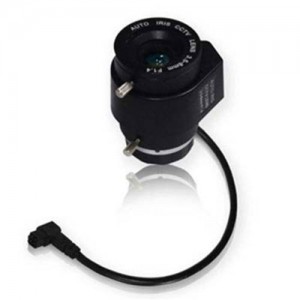 Surveillance camera lens are slowly beginning to evolve with the technology that supports them. Before the digital age, a good majority of the surveillance cameras required that a lens be purchased for each camera. Presently, some cameras still work that way, but the vast majority has the lens built right into the camera. These lenses are often referred to as “board lenses.”
Surveillance camera lens are slowly beginning to evolve with the technology that supports them. Before the digital age, a good majority of the surveillance cameras required that a lens be purchased for each camera. Presently, some cameras still work that way, but the vast majority has the lens built right into the camera. These lenses are often referred to as “board lenses.”
There are three major types of digital video camera based on their shape, the box type, the bullet type, and the dome type. Basically the bullet and dome type cameras come with a lens already built into the unit. This is often referred to as a board lens. The box camera however, almost always requires the purchase of a lens.
As far as the lenses go, there are two different types of surveillance camera lenses, fixed and varifocal. Fixed lenses do exactly what their name implies; they stay fixed in a certain immobile position. Varifocal lenses have the ability to change their focal length either manually or remotely depending on the lens.
This means that for fixed lenses, the size of the field of view never changes; the lens can’t alter its own focal length so the width of the capture shot never changes. This is great for use where there is no need to mess with changing the focal length regularly such as monitoring a parking lot, an entrance or exit, and other uses where zooming in on a subject or object is really not required and the camera will not be moved around a lot.
Varifocal lenses on the other hand, can move in and out changing the size of their focal length. This is particularly handy when it is necessary to change the camera’s field of view to accommodate moving objects, tight shots, etc. The focal length of a varifocal surveillance camera lens is normally expressed in millimeters (mm). For example a fixed camera lens with a focal length of 3.0 mm will produce a fairly wide angle shot, whereas a focal length of 15.5mm will produce a narrow angle shot.
The nice thing about a varifocal lens is, depending on how it is made, you can get a focal length as small as possible and any focal length in between its maximum focal length. It’s important to note that some of these varifocal lenses must be moved manually (by hand) while some our connected to a motor that drives the lens and is controlled remotely.
As long as we are on the topic of surveillance camera lenses, we’ll also mention a few of the characteristics of lenses that you probably should be aware of in addition to just focal length. Four other points come to mind: 1. Depth of field; 2. F stop; 3. CS or C mount; and 4. Manual or Auto Iris.
Depth of Field
The depth of field is the distance from the camera to the object at which remains in focus. Generally, the higher the F stop and tighter the Iris positions, the more objects that will be in focus. In other words, a large Depth of Field means almost all objects in the Field of View can be in focus. On the other hand, a small Depth of Field will only allow a small section of the Field of View in focus.
F Stop
The F stop is the foacl length divided by the effective aperture diameter. In much simpler terms, the F Stop is an indication of the speed of the lens. Since light must pass through the lens to the sensor, the F Stop gives us an idea of how much light it will absorb during the process. A low F Stop lens is very efficient whereas a high F stop lens will require a lot of light.
CS or C mount
There are two standard surveillance camera lens mounts the “CS” and the “C.” The difference between the C and CS is found in the distance between the lens and the CCD (Charged Coupled Device) or CMOS (Complementary Metal Oxide Semiconductor). The C mount distance is 17.5mm while the CS mount is 12.5mm.
Iris
The iris works with the surveillance camera lens to control the amount of light entering the camera via the sensor. For cameras mounted in positions that have changing light sources, it is a good idea to use a lens with an automatic iris. For cameras used inside or in environments where the light conditions seldom ever change, manual irises are sufficient.











